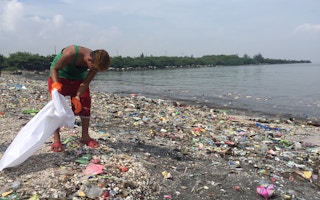No clear targets, no timeline, and no additional efforts to help facilitate recycling by consumers.
This was how environmental group Greenpeace described global food and beverage company Nestlé’s announcement on 10 April that it aims to make all of its packaging recyclable or re-usable by 2025.
“Nestlé’s statement on plastic packaging includes more of the same greenwashing baby steps to tackle a crisis it helped to create. It will not actually move the needle toward the reduction of single-use plastics in a meaningful way, and sets an incredibly low standard as the largest food and beverage company in the world,” said Greenpeace oceans campaigner Graham Forbes in a statement.
“It is full of ambiguous or nonexistent targets, relies on ‘ambitions’ to do better, and puts the responsibility on consumers rather than the company to clean up its own plastic pollution.”
Greenpeace Philippines campaigner Abigail Aguilar added that Nestlé’s statement was focused on recycling which was not enough to solve the plastic pollution problem.
A progressive reduction of single-use plastics like sachets, and a shift to both reusable packaging and alternative delivery systems was how the issue could be truly addressed, Aguilar said in an interview with Eco-Business.
Meanwhile, Nestlé Philippines did not agree that their global announcement was unclear, and said it was a big step towards tackling the plastic problem.
“We know that there is much more to be done in order to address this critical global issue, and we are committed to playing our part in working to identify meaningful solutions,” it said in a statement to Eco-Business.
“We will provide regular public updates on our progress, and look forward to working collaboratively with all stakeholders in order to achieve our shared vision that no plastic ends up discarded in our natural environment, including our oceans and waterways.”
Nestlé, which owns more than 2,000 brands worldwide from Nescafé instant coffee, Milo chocolate drink to chocolate snacks like KitKat and Smarties, topped the list as the biggest contributor to plastic pollution in the Philippines in an ocean clean-up campaign in September last year.
“
We know that there is much more to be done in order to address this critical global issue, and we are committed to playing our part in working to identify meaningful solutions.
Nestlé Philippines
A brand audit was conducted after volunteers sifted through plastic waste along a 200-hectare length of land on Freedom Island, off the coast of Parañaque in Metro Manila.
It was found that Nestlé’s product packaging made up 16.74 per cent of the 54,260 pieces of plastic waste collected, followed by Unilever products with 10.82 per cent, Indonesian coffee manufacturer PT Torabika’s contributed 10.17 per cent, followed by Philippine consumer goods giant Universal Robina Corp with 9.75 per cent and Procter & Gamble with 7.19 per cent.
The company’s products have shown to have consistent presence in cleanups and brand audits completed around the world.

















